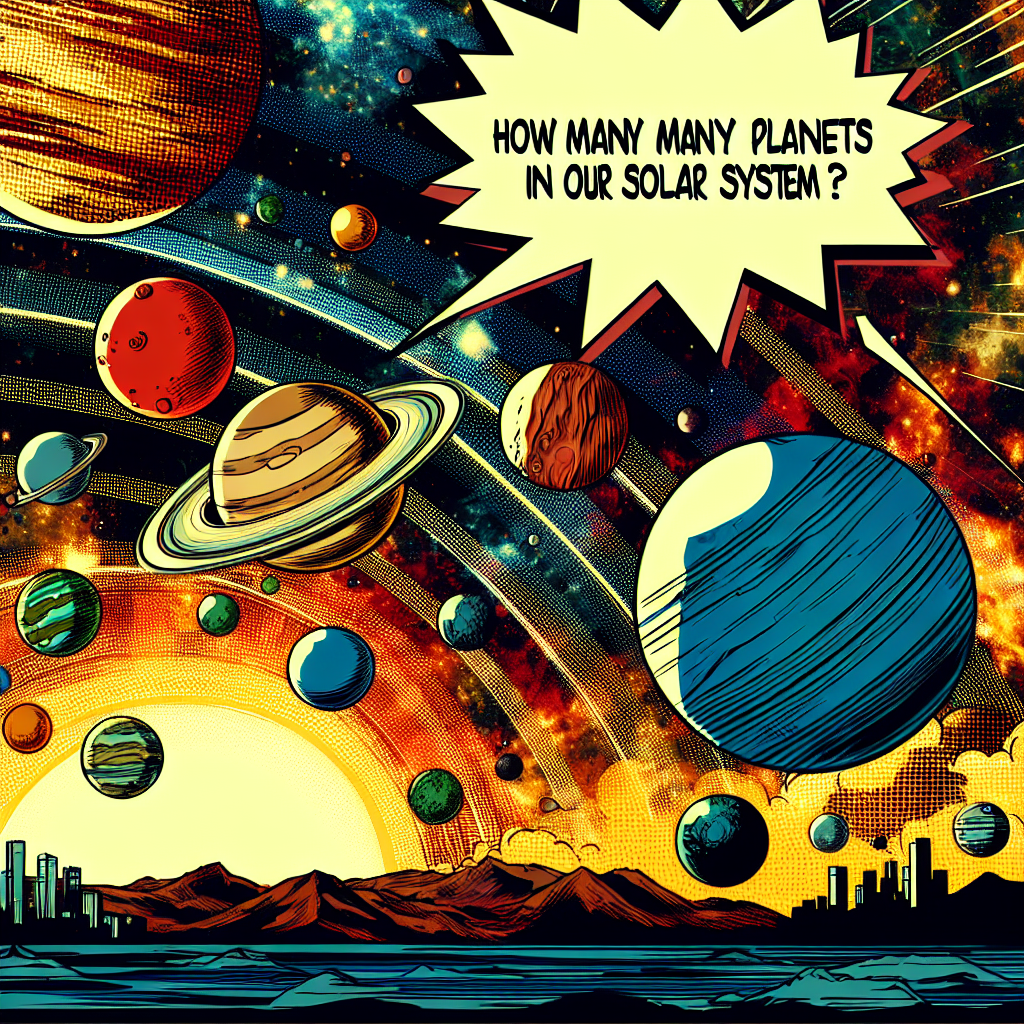Our solar system is like a cosmic neighborhood, with the Sun as the central hub and planets orbiting around it. Think of it like a bicycle wheel, where the Sun is the center and the planets are the spokes.
The first planet closest to the Sun is Mercury, a scorching hot world that's a bit like being stuck in a perpetual oven. It's a rocky planet, meaning it's composed primarily of rocks and metals, and it has no atmosphere to speak of.
The next planet out is Venus, often referred to as Earth's twin due to its similar size and mass. But don't let that similarity fool you – Venus is a hostile environment, with surface temperatures reaching as high as 870°F (465°C) and a toxic atmosphere that would be deadly to humans.
Now we come to our home planet, Earth, the only known haven for life in the universe. It's a terrestrial planet, meaning it's composed primarily of rocks and metals, and it has a just-right atmosphere that supports a diverse range of life forms.
Mars is the next planet out, a rocky world that's been the subject of much speculation and exploration. It's a bit like a cosmic cousin to Earth, with valleys, craters, and volcanoes that suggest a geologically active past.
The fifth planet from the Sun is Jupiter, a gas giant that's truly massive – so massive, in fact, that it could fit all the other planets combined inside its vast atmosphere. Jupiter is like a cosmic vacuum cleaner, sucking up asteroids and comets that venture too close.
Jupiter's closest rival is Saturn, another gas giant that's equally impressive in its own right. Saturn is known for its stunning ring system, which is made up of ice and rock particles that range in size from tiny dust grains to massive boulders.
Next up is Uranus, an icy giant that's often overlooked in favor of its more charismatic cousins. But Uranus has a unique charm all its own, with a tilted axis that makes it look like it's spinning on its side.
The eighth and final planet in our solar system is Neptune, a distant world that's as cold as it is mysterious. Neptune's atmosphere is active and stormy, with winds that can reach up to 2,100 kilometers per hour (1,300 miles per hour).
But wait, you might be thinking – what about Pluto? Ah, Pluto is a special case. Once considered the ninth planet in our solar system, it's now classified as a dwarf planet, a distinct category of objects that also includes Eris and Ceres.
So what's the difference between a planet and a dwarf planet, you ask? Well, the main difference is that planets are massive enough to have cleared their orbits of other objects, whereas dwarf planets are part of a larger population of similar objects in the same orbit.
- Pluto, for example, is part of the Kuiper Belt, a region of icy bodies and other small celestial objects that extends from Neptune's orbit out to a distance of about 55 astronomical units (AU) from the Sun.
- An astronomical unit is the average distance between the Earth and the Sun, which is about 93 million miles or 149.6 million kilometers.
The reclassification of Pluto in 2006 was a major shift in the way we understand our solar system, and it's led to ongoing debates about what constitutes a planet. But one thing's for sure – our solar system is a complex and fascinating place, full of mysteries waiting to be uncovered.
In recent years, we've discovered thousands of exoplanets orbiting other stars, each one offering a new window into the possibilities of life beyond Earth. It's a cosmic tapestry that's still being woven, with new threads being added all the time.
As we continue to explore our solar system and beyond, we're reminded of the infinite complexity and beauty of the universe. It's a journey that's been unfolding for centuries, and one that will likely continue for centuries more.
So the next time you look up at the night sky, remember that you're gazing out into a vast expanse of wonder and discovery, with our solar system just a small part of the grand cosmic landscape.

Popular Space Questions
Find answers to the trending space questions being asked by our community on social media.
- How many galaxies are there in the universe?
- How far is Pluto from Earth?
- How many planets are in the Milky Way?
- What would happen if a rogue planet entered our solar system?
- How big is the Earth?
- How many planets are in our solar system?
- What are the planets in order?
- How big is the universe?
- What if we found a way to manipulate gravity?
- What would happen if a pulsar's beam hit Earth?